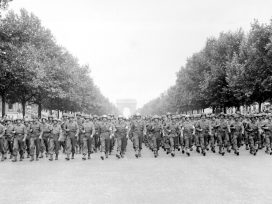
The Second World War no longer serves as a history of the western European present. The current era is marked by a different set of problems, not least the fading appeal of the model of democracy installed after 1945.
Seventy-five years after the end of the Second World War, another war is being fought in its shadow. The ongoing Ukrainian-Russian conflict is fuelled by recycled Soviet cliches. Memory of the victory over fascism, first weaponized by the Kremlin during the Orange Revolution, continues to frame the Russian view of Ukraine.
An opinion poll conducted in April 2020 by the Kyiv based Democratic Initiatives Center shows both significant shifts and continuing ambivalence in attitudes to the memory of Second World war in Ukrainian society. For example, 52.5% of Ukrainian citizens still cling to the Soviet narrative and associate 9 May with the victory of the Soviet people in the Great Patriotic War, while 32.2% associate the date with the victory of the anti-Hitler coalition in WWII. At the same time, and in striking contrast to Russia, 56% of Ukrainians consider that the USSR bears responsibility for the beginning of WWII together with Nazi Germany; only 24% disagreed with this. Even more telling is that 61% (72.3% in the west of the country and 48.9% in the east) thought that Ukrainian politicians should not participate in the 2020 Victory Day celebrations in Moscow (which have since been cancelled). These figures reflect the important role that the memory of WWII has played in the ongoing conflict with Russia.
The weaponization of World War II memory in Russian-Ukrainian relations started long before the Euromaidan. It goes back at least to the Orange Revolution in 2004, if not earlier. At the time, spin doctors working for the Ukrainian Party of Regions denounced the presidential candidate Viktor Yushchenko as a nationalist and created a semantic link that equated Ukrainian nationalism with fascism and, by extension, with Nazism. This association, which drew on an old Soviet ideology cliche, was deployed in political propaganda and picked up by Moscow in support of Viktor Yanukovych’s political efforts against Yushchenko.
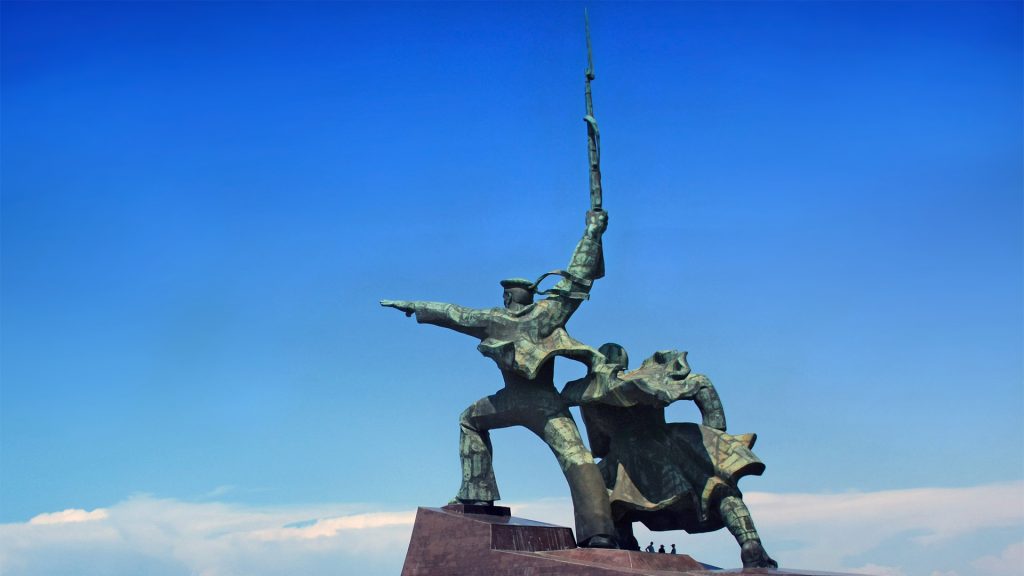
Soviet war memorial in Sevastopol. Photo by Aleksander Kaasik from Wikimedia Commons. Aleksander Kaasik / CC BY-SA
In the post-war Soviet Union, Ukrainian nationalists in western Ukraine who had fought against the Stalinist regime were labelled as ‘traitors to the Soviet Fatherland’ (we should recall that western Ukraine had become part of the Soviet Union only in 1939 as a result of the Molotov-Ribbentrop Pact). Stepan Bandera, a leader of the Ukrainian nationalists associated with the Organisation of Ukrainian Nationalists (OUN) and Ukrainian Insurgent Army (UPA), who was assassinated by an NKVD agent in Munich in 1959, became an anti-hero of the Soviet historical narrative.
After the breakup of the Soviet Union, the taboo surrounding any memorialization of the UPA – most of whose veterans ended up in the Gulag after the war – was lifted and the army acquired cult status in western Ukraine. This opened up a national discussion on the UPA’s role in Ukrainian history and the status of veteran insurgents in relation to that of traditionally privileged Soviet Army veterans. While many supporters of the Ukrainian Communist party continued to regard UPA soldiers as ‘traitors’ who had fought against the Soviet army, discussion among historians and within the public domain focused on their involvement in crimes against civilians, especially Jews and Poles.
Because a significant sector of Ukrainian society still upheld the Soviet memory of World War II (or myth of the Great Patriotic War) after 1991, the institutionalization of a new heroic mythology – the UPA’s national liberation struggle against the Soviet regime – created a confrontational political situation. Some Ukrainian historians (e.g. Andrii Portnov and Vladyslav Hrynevych) wrote of the ‘divided’ memory within Ukrainian society and, following the Orange Revolution, the metaphor of memory wars became increasingly popular.
After his election as president in 2004, Viktor Yushchenko actively engaged in the politics of memory, dispelling Soviet myths and politically rehabilitating the OUN and UPA. His opponents exploited Yushchenko’s alleged fascism to mobilize their electorate, labelling him and his party, Our Ukraine, as ‘nashists’ (which rhymes with fascists and is a pun on the Russian word ‘nash’, meaning ‘our’) and the ‘orange plague’ (playing on the analogy with the ‘brown plague’, a popular metaphor for fascism in Soviet propaganda).
When Russia joined the anti-Yushchenko campaign in Ukraine, launched by the Party of Regions and supported by the Communist party, it was able to build on its experience of memory wars with the Baltic countries. The new Lithuanian, Latvian and Estonian national identities constructed in the early 1990s were based on the narrative of Soviet occupation, anti-Soviet resistance and the struggle for national liberation. By instrumentalizing the issue of collaboration with Nazism and participation in the Holocaust, Russia questioned the legitimacy of the Baltic countries’ post-Soviet nationhood and the commitment of their elites to European values. These memory wars involved Russian state actors, including the Presidential Administration and the Duma, and regime loyal non-governmental institutions (e.g. the Historical Memory Foundation and the youth organisation Nashi).
It was during this time that the myth of the Great Patriotic War began to acquire special political importance, by the mid-2000s forming the basis of a new patriotism and ideology of Russia as a great power. Moscow started to regard recognition of Russia’s victory over Nazi Germany as a key indicator of political loyalty, as demonstrated by the participation of foreign leaders in the annual Red Square Victory Parade.
In post-Soviet countries, the myth of the Great Patriotic War has become a factor in consolidating Russian-speaking minorities. The 9 May celebrations have been turned into an annual ritualistic display of Soviet nostalgia and performance of group identity. This is apparent in the increasingly widespread use of the St George’s ribbon, a Russian symbol of remembrance, and new traditions such as the March of the Immortal Regiment.
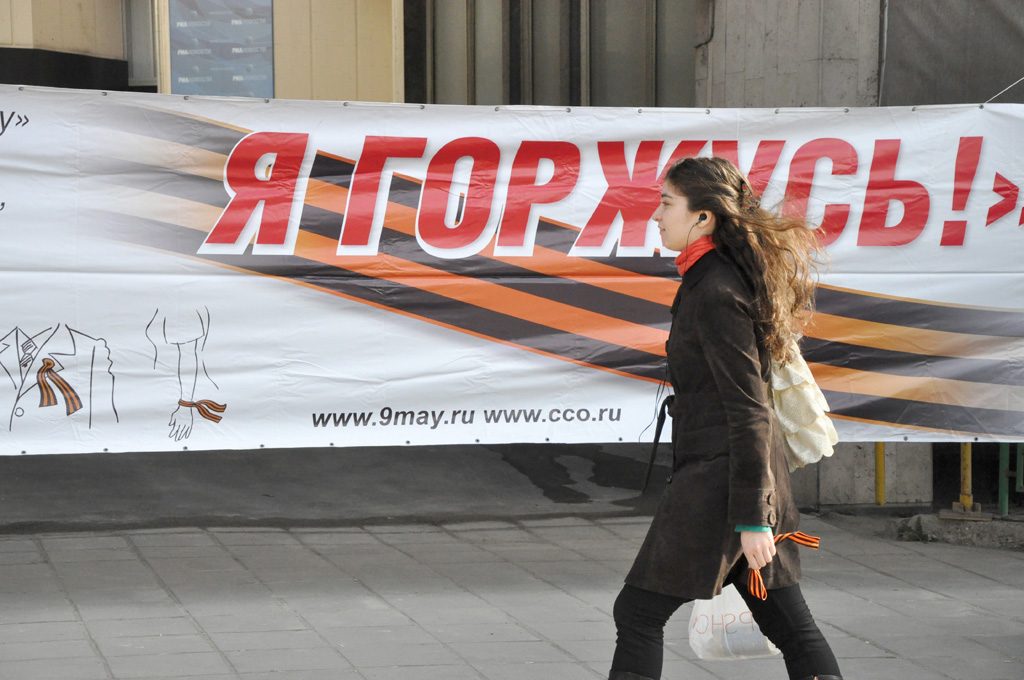
The St George’s ribbon campaign is launched in Moscow, 2009. Photo by Olga Butenop from Wikimedia Commons RIA Novosti archive, image #389237 / Olga Butenop / CC-BY-SA 3.0 / CC BY-SA
From the outset of the Euromaidan in Kyiv in November 2013, Russian propaganda and pro-Russian propaganda in Ukraine used ‘Ukrainian fascism’ as a label to discredit the protests. This propaganda, tried and tested during the Orange Revolution, exploited the radicalization of some protesters and the increasing role that far-right groups began playing in January/February 2014 to stir up fears of an impending ‘fascist coup’ in Kyiv. This type of propaganda proved particularly effective amongst the population of Crimea and eastern Ukraine, most of whom did not support the Euromaidan.
Their disorientation and fears heightened in February 2014 after violence escalated in Kyiv and Yanukovych fled the country. Around this time, the St George’s ribbon also became a symbol of anti-Maidan – the counter-protest movement backed by the Party of Regions, pro-Russian organizations and, later, quite openly by Russia. Official Russian media and political rhetoric emphasized Russia’s solidarity with the ‘anti-fascist struggle of the fraternal Ukrainian nation’, to which Russia has promised its help and protection.
Russian media dubbed the new Ukrainian government the ‘Kyiv junta’. The term junta – which anyone who grew up under the USSR associates with Latin American military dictatorships (supported by the USA) – was meant to underline the ‘fascist nature’ of the new Ukrainian regime established due to a coup d’état and backed by Washington. By the same token, Russia was again, as in 1941, in the vanguard of the struggle against fascism, playing the role of saviour from the ‘brown plague’.
The Kremlin justified Crimea’s annexation and its support for the so-called ‘Donetsk and Luhansk People’s Republics’ as the need to protect the Russian-speaking population from the threat of ‘Ukrainian fascism’. A combination of nostalgia for the Soviet Union, Russia’s anti-fascist mission and Russian nationalism resulted in the ideology of the ‘Russian Spring’ and of ‘Novorossiya’ (New Russia), the project of a new state that was meant to be created in the Ukraine’s southeast. Such a connection is exemplified by the Night Wolves, the bikers club that started organising public large-scale patriotic shows in Russia and the Crimea with the Kremlin’s support.
The ‘Russian Spring’ happened just before the 1 and 9 May holidays, traditionally the time when the memory of the Great Patriotic War is publicly brought to the fore. In the spring of 2014, pro-Russian rallies actively exploited the Great Patriotic War and Great Victory’s symbolism. Concern was high in Kyiv and in eastern and southern Ukraine that Moscow might make use of 9 May to stage another demonstration of power. Some even suspected that Vladimir Putin was planning to hold the next Victory Parade in Kyiv’s main street, Khreshchatyk.
However, tragic events unfolded a week earlier on 2 May in Odessa. Violence escalated during street unrest that culminated in a fire at the Trade Unions House, where participants of the pro-Russian anti-Maidan sought shelter from an attack by pro-Ukrainian protesters. Over forty people lost their lives in the conflagration. This offered the pro-Russian movement an equivalent to the shootings in Institutskaya Street in Kyiv in February 2014, and its very own martyr myth – the Khatyn of Odessa (Khatyn, the Belarusian village burned down by German occupiers along with its inhabitants because of their links to partisans, is one of the most enduring symbols of the Great Patriotic War in the post-Soviet space).
The ‘Khatyn of Odessa’ myth draws a direct parallel between World War II events and the fire at Odessa’s Trade Unions House, implying that pro-Russian activists were deliberately burned alive by ‘Ukrainian fascists’ as an act of revenge and as a warning to others. The events in Odessa and especially the fact that they were presented in this light by the Russian media, have prompted many in Ukraine and Russia to join armed units of the Donetsk and Luhansk Peoples’ Republics.
In the years since then, Ukrainian-Russian conflict entered a protracted phase of uncertainty. The Novorossiya project was abandoned and Russia started to position itself as a peacemaker in Ukraine’s ‘civil war’. Nevertheless, Russian media have continued to frame events primarily in terms of ‘radical Ukrainian nationalism’ and ‘Ukrainian fascism’. This trope is organically linked to other propaganda frameworks: that of Russians and Ukrainians being part of a single nation, and that of the Ukrainian state being an artificial construct supported by the West. From this perspective, radical Ukrainian nationalism and Russophobia are intrinsic features of western Ukraine and go back to the time of Stepan Bandera and the UPA. They are considered alien to the ‘genuine’ Ukrainian people, who are faithful to Russia, but have been betrayed by Ukraine’s pro-western elites.
The Ukrainian authorities responded to Russia’s instrumentalization of the memory of World War II by trying to create a distance to the Soviet myth of the Great Patriotic War and its symbolism. One of the four laws on decommunization adopted in the spring of 2015 established a new holiday on 8 May (the Day of Remembrance and Reconciliation) without abolishing Victory Day on the following day. In addition, a new official remembrance symbol, the red poppy has been brought in to replace the St George’s ribbon’s symbolism of victory and military valour (later banned in Ukraine). Ukrainian lawmakers intended these changes to bring the country closer to what is perceived in Ukraine as a European tradition of remembering World War II.
Part of Poroshenko’s reform of the Ukrainian armed forces was about de-Sovietization and included the introduction of a new uniform and symbols referring to the Ukrainian military tradition. Yet the law on decommunization, which called for the removal of statues of Communist Party and Soviet state officials, has not been applied to Great Patriotic War memorials. Incidentally, some symbolic figures such as Marshall Georgy Zhukov have ended up in a grey zone; the conflict over the Zhukov statue and eponymous boulevard in Kharkiv has been ongoing for several years now.
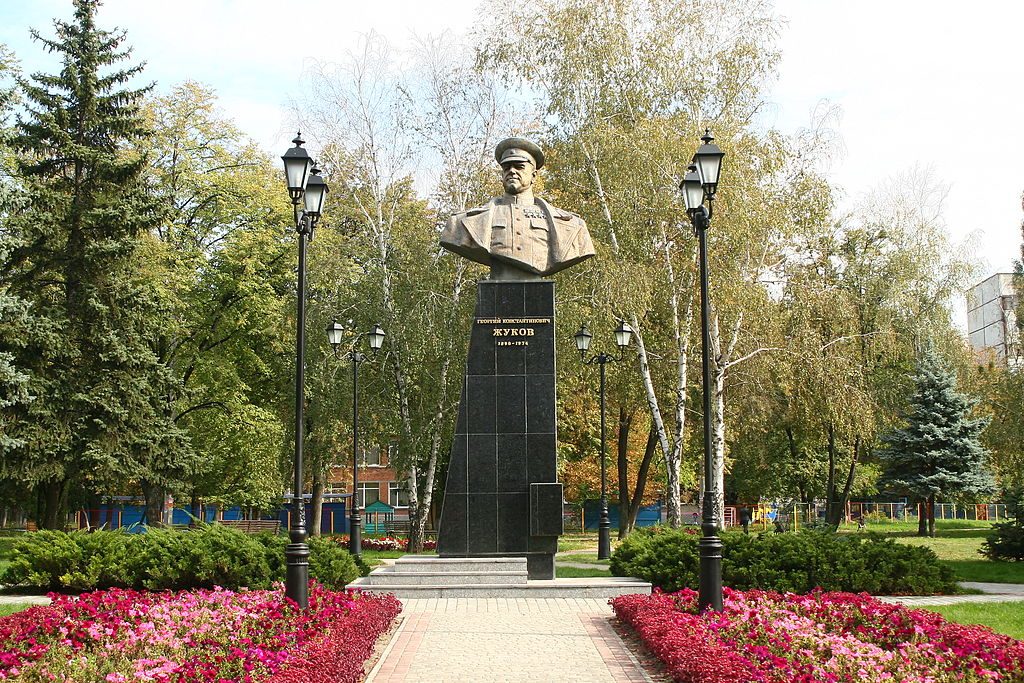
The monument to Zhukov in Kharkiv. Photo by Корольков from Wikimedia Commons Корольков Дмитрий Юрьевич / CC BY-SA
From 2014 to 2019, during Poroshenko’s presidency, the Ukrainian Institute of National Remembrance strove to shape the narrative of World War II in a way that would contribute to reconciliation nationwide. The new pantheon includes not only Soviet Army soldiers but also UPA combatants, men and women, Ukrainians and Crimean Tartars; and Stalin is presented as an enemy of Ukraine on a par with Hitler. At the same time, the Institute’s critics have accused its leadership of continuing to heroize Stepan Bandera and the UPA, which they say continues to polarize Ukrainian society.
Victory Day celebrations on 9 May, together with all the Soviet–Russian commemorative practices connected to this holiday (such as the March of the Immortal Regiment), continue to serve as a platform for pro-Russian sentiments. Ukraine’s new president, Volodymyr Zelensky, is far less interested in the politics of remembrance than Poroshenko was, and the new leadership of the Ukrainian Institute of National Remembrance, while emphasizing the continuation of past policy, seems to have adopted a more nuanced approach. The corona pandemic spared Zelensky the annual dilemma of 9 May this time around. However, the controversies surrounding the date will remain in the focus of Ukrainian public debate and continue to place strain on Ukrainian-Russian relations.
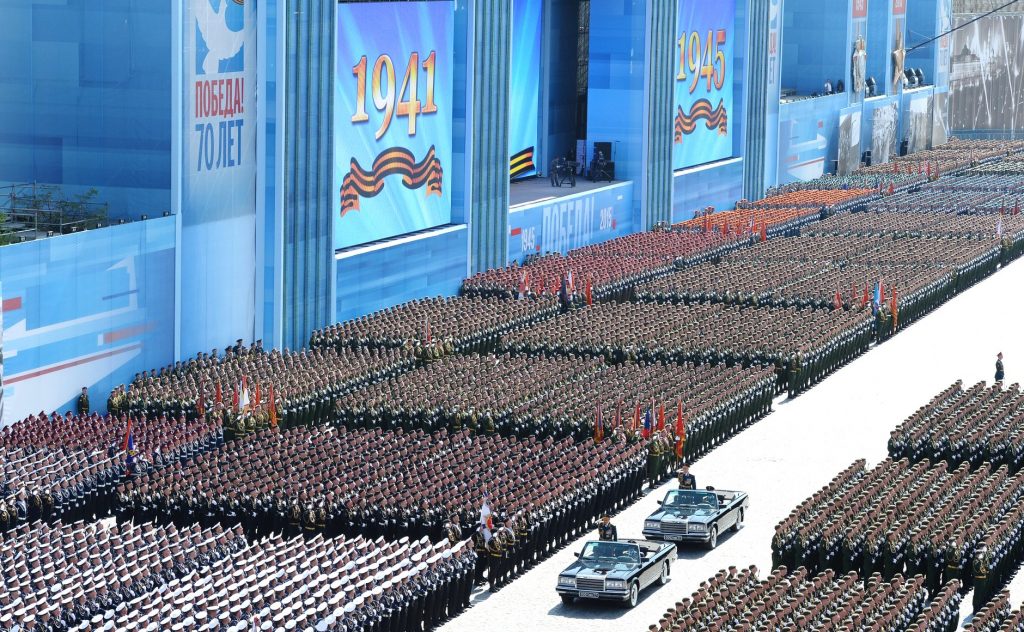
The 2015 Victory Day parade. Photo by may9.ru from Wikimedia Commons Kremlin.ru / CC BY-SA
Published 7 May 2020
Original in Russian
Translated by
Julia Sherwood
First published by Eurozine
© Tatiana Zhurzhenko / Eurozine
PDF/PRINTSubscribe to know what’s worth thinking about.

The Second World War no longer serves as a history of the western European present. The current era is marked by a different set of problems, not least the fading appeal of the model of democracy installed after 1945.
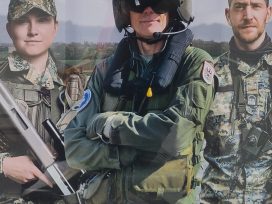
Talk of demilitarization and mobilization divides opinion. Could giving women and other feminized groups more agency in wartime decision-making flip their traditionally passive role, providing relief from trauma and injustice?